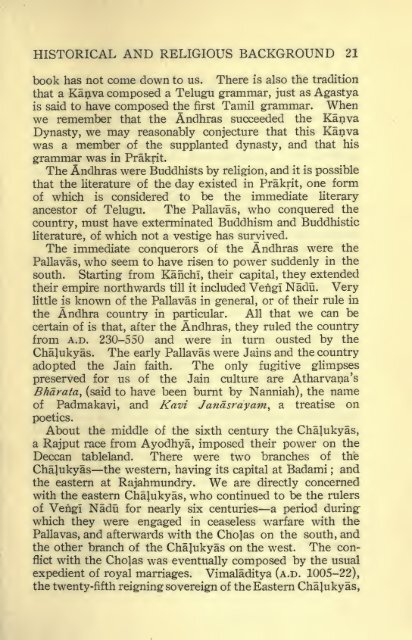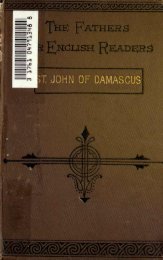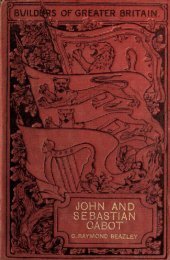A history of Telugu literature; - Cristo Raul
A history of Telugu literature; - Cristo Raul
A history of Telugu literature; - Cristo Raul
Create successful ePaper yourself
Turn your PDF publications into a flip-book with our unique Google optimized e-Paper software.
HISTORICAL AND RELIGIOUS BACKGROUND 21<br />
book has not come down to us. There is also the tradition<br />
that a Kanva composed a <strong>Telugu</strong> grammar, just as Agastya<br />
is said to have composed the first Tamil grammar. When<br />
we remember that the Andhras succeeded the Kanva<br />
Dynasty, we may reasonably conjecture that this Kanva<br />
was a member <strong>of</strong> the supplanted dynasty, and that his<br />
grammar was in Prakrit.<br />
The Andhras were Buddhists by religion, and it is possible<br />
that the <strong>literature</strong> <strong>of</strong> the day existed in Prakrit, one form<br />
<strong>of</strong> which is considered to be the immediate literary<br />
ancestor <strong>of</strong> <strong>Telugu</strong>. The Pallavas, who conquered the<br />
country, must have exterminated Buddhism and Buddhistic<br />
<strong>literature</strong>, <strong>of</strong> which not a vestige has survived.<br />
The immediate conquerors <strong>of</strong> the Andhras were the<br />
Pallavas, who seem to have risen to power suddenly in the<br />
south. Starting from Kanchi, their capital, they extended<br />
their empire northwards till it included Vengi Nadu. Very<br />
little is known <strong>of</strong> the Pallavas in general, or <strong>of</strong> their rule in<br />
the Andhra country in particular. All that we can be<br />
certain <strong>of</strong> is that, after the Andhras, they ruled the country<br />
from A.D. 230-550 and were in turn ousted by the<br />
Chalukyas. The early Pallavas were Jains and the country<br />
adopted the Jain faith. The only fugitive glimpses<br />
preserved for us <strong>of</strong> the Jain culture are Atharvana's<br />
Bharata, (said to have been burnt by Nanniah), the name<br />
<strong>of</strong> Padmakavi, and Kavi Janasrayam, a treatise on<br />
poetics.<br />
About the middle <strong>of</strong> the sixth century the Chalukyas,<br />
a Rajput race from Ayodhya, imposed their power on the<br />
Deccan tableland. There were two branches <strong>of</strong> the<br />
Chalukyas the western, having its capital at Badami ; and<br />
the eastern at Rajahmundry. We are directly concerned<br />
with the eastern Chalukyas, who continued to be the rulers<br />
<strong>of</strong> Vengi Nadu for nearly six centuries a period during<br />
which they were engaged in ceaseless warfare with the<br />
Pallavas, and afterwards with the Cholas on the south, and<br />
the other branch <strong>of</strong> the Chalukyas on the west. The conflict<br />
with the Cholas was eventually composed by the usual<br />
expedient <strong>of</strong> royal marriages. Vimaladitya (A.D. 1005-22),<br />
the twenty-fifth reigning sovereign <strong>of</strong> the Eastern Chalukyas,

















